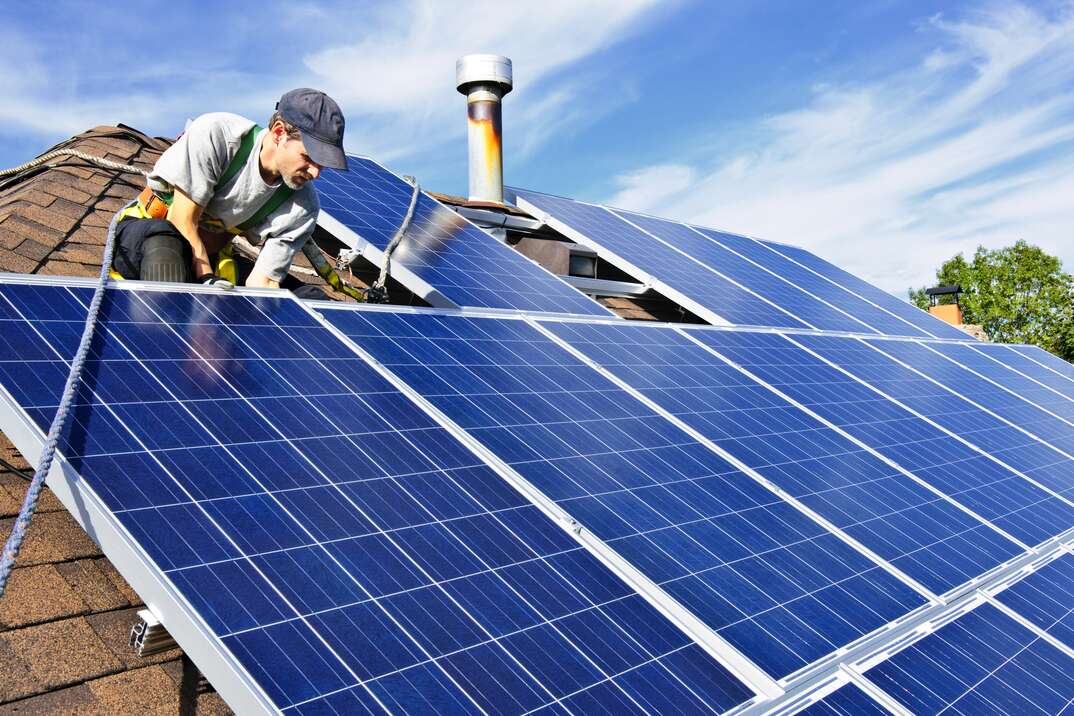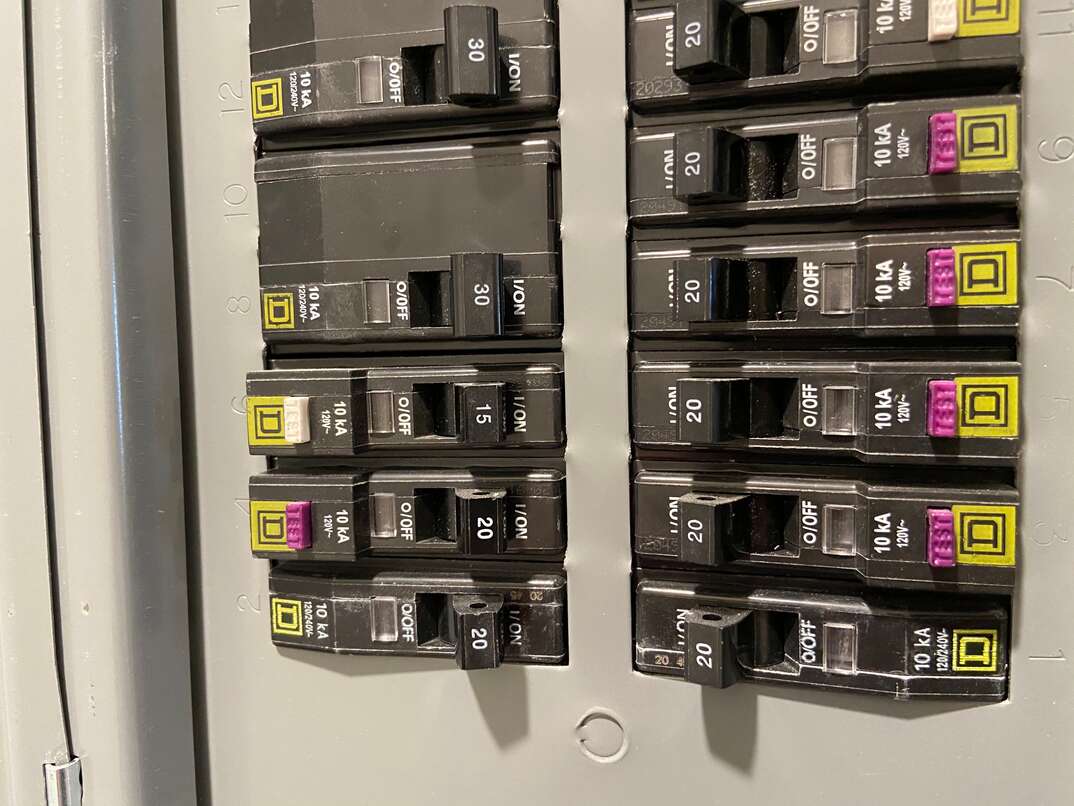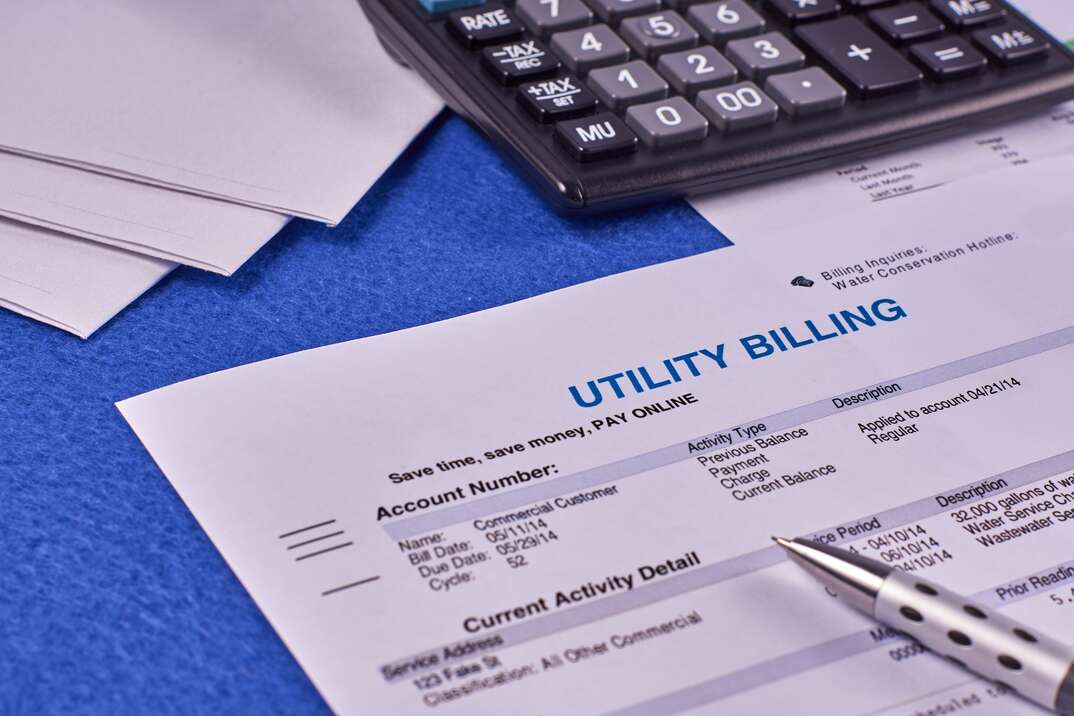How Much Does It Cost to Install Solar Panels?

Solar Panel Costs at a Glance
- Price per watt: $1-$3
- Average cost of 10 kW system: $29,600
You may be surprised to learn that you don’t need to live somewhere where it’s overwhelmingly sunny to reap the benefits of a solar energy system. In fact, homeowners in the Northeast see some of the biggest savings when they install solar panels despite the fact that the area is prone to rainy, cold weather.
This May Also Interest You: How to Install Solar Panels: 6 Steps to Daylight Savings
Solar energy systems have boomed in popularity in recent years, largely due to the fact that they provide an environmentally friendly energy option. Beyond that, solar panels can save you money on your energy bill.
But how much does it cost to install solar panels, and just how much can they save you? Here’s everything you need to know.
How Much Do Solar Panels Cost?
The amount of electricity you’re looking to generate from solar panels will determine cost. The cost is per watt. Prices are usually listed by kilowatt, which is 1,000 watts. The average solar system is 10 kW.
Here are some average costs for solar energy systems by size:
- 2 kW, $5,920
- 5 kW, $14,800
- 7 kW, $20,720
- 10 kW, $29,600
- 15 kW, $44,400
- 25 kW, $74,000
The price for installation also includes inverters, solar batteries and other additional equipment.
Cost of Solar Panels by State
For a more accurate estimate of what you’ll pay, take a look at the cost to install solar panels in your state. A big factor in the price is the cost of electricity, which varies state to state. In Arizona, for example, you can expect to pay between $13,680 and $16,320 for a 6 kW system. For the same system in Michigan, you would pay between $16,020 and $22,500.
How Much Does a Single Panel Cost?
Cost is per watt. Most solar panels cost between $1 and $3 per watt. The output of an average solar panel ranges from 150W to 350W.
Types of Solar Panels
There are three different types of solar panels most homeowners can choose from, each with their own advantages and drawbacks:
Monocrystalline Panels
These panels have cells made out of silicon wafers. These wafers, made of a pure crystal of silicon, are assembled into rows and columns to form a rectangle, covered with a glass sheet and framed together. If you see a solar panel with black cells, it’s most likely a monocrystalline panel.
Monocrystalline panels are aesthetically pleasing, but they are also high-efficiency and high-performance. They do come at a higher cost, however.
Polycrystalline Panels
Much like monocrystalline panels, polycrystalline panels are also made out of silicon wafers. Polycrystalline solar cells are composed of fragments of silicon crystals that are melted together in a mold. They tend to have a bluish hue.
These panels come at a lower cost than monocrystalline panels, but are also less efficient. Some people also find the blue color of the panels off-putting.
Thin-Film Panels
Thin-film solar panels can be made from a variety of different materials, but cadmium telluride is the most popular. Amorphous silicon is also common. These panels are low-profile, and depending on where they’re placed on your home, they may not stand out at all.
Thin-film panels are portable, lightweight and flexible. However, they offer the lowest efficiency and performance of the three. Price depends on the material. Cadmium Telluride panels are often the cheapest option. Installation costs also tend to be lower.
Are Solar Panels Worth It?
Solar panels may be worth it from an energy-production standpoint, but what about from a financial standpoint? Here are three things to consider:
Your Energy Bill
If you are currently paying a lot of money for energy, you stand to gain a lot from switching over to solar power.
Budget
Is your budget large enough to install the type and size of solar energy system that will be best for your home and will cover your energy needs?
Financing
Whether you plan to buy or lease your solar panels will also play a big role in price. If you can purchase in cash right away, you will save more than with any other option.
How Many Solar Panels Are Needed to Run a House?
Start by looking at how many kilowatt-hours (kWh) of electricity you use in a year. One kWh represents how much energy you would use if you ran a 1,000-watt appliance for an hour. Most utility companies provide you with your total power consumption for the last 12 months on your monthly bill.
According to the latest data from the U.S. Energy Information Administration, the average American household used 897 kWh per month — or 11,000 kWh per year — in 2016. The typical homeowner will need 28 to 34 solar panels to cover their energy usage for the year, depending on the wattage of the panels and location of your home.
More Related Articles:
- When to Install Home Solar Panels
- 15 Ways to Save on Your Electric Bill
- What is a Home Energy Audit?
- 5 Ways to Conserve and Be Energy Efficient
- Extending the Life of Your Roof in 3 Easy Steps
How Much Money Can Solar Panels Save?
Utility prices increase every year, and experts expect that trend will continue for the next 25 years. With a 6 kW solar system installed, you can expect to save an average of $1,500 annually. This varies depending on the state you live in. It can be difficult to make long-term estimates on savings due to utility cost inflation.
Can You Get a Tax Credit for Installing Solar Panels?
The Solar Investment Tax Credit was first introduced in the Energy Policy Act of 2005 and has been extended multiple times in recent years. In 2021, the ITC offers a 26% tax credit on your total system cost. This includes the panels themselves and contractor fees for the installation. If it costs $10,000 to buy and install your system, you can expect to receive a $2,600 credit.
However, you are only allowed to claim the credit if you own your system. This is why leasing your solar system may not be the best choice financially. If another company leases you the system, they still own the equipment and can claim the incentives.
On top of the federal incentive, there are also state- and city-level programs available to encourage solar adoption on a local level. In almost all cases, state and local programs stack on top of the federal incentive.
How Long Do Solar Panels Last?
The average lifespan of your solar panels depends on several different factors, but most last between 25 and 30 years. Even after the 25-year mark, your solar panels will likely continue to produce energy, just with lower efficiency. Solar panels decrease in efficiency the longer they are in operation. According to an analysis by the National Renewable Energy Laboratory, some premium panel manufacturers offer degradation rates as low as 0.3% per year, while other brands have higher degradation rates of up to 0.8% per year.
Do Solar Panels Need Maintenance?
Luckily, solar panels require very little maintenance to continue functioning at a high level. The main thing that you need to worry about is keeping your panels clear of dirt, leaves and other debris. If you let these things build up, they can block the sun’s rays. Snowfall can also block the sun’s rays, so you may need more extensive maintenance services during the winter to keep your panels operational. One of the easiest ways to minimize build-up is to install your panels on an angle. This way, rainfall can clear away any debris that has accumulated on them.
Should You Lease Solar Panels?
The most notable drawback to leasing solar panels is that you are ineligible for the tax credit. Purchasing solar panels can also increase the market value of your home. However, if you want to avoid the responsibility of maintenance and repairs, leasing might be a practical option for you.
How Are Solar Panels Installed?
You should reach out to a professional for assistance in installing solar panels, but here’s a quick look at the process:
- Apply for a permit to install, which can take up to 10 days to process.
- Install the racking and mounting system on your roof.
- Install solar panels.
- Your city or county inspector will need to sign off on the system, ensuring proper installation.
- Send the final job card, interconnection paperwork and your net metering agreement to your utility company.
Since we’re all home now more than ever, being prepared for unexpected home repairs with a plan from HomeServe is important. Having a plan in place gives you the peace of mind knowing that you can simply call our 24/7 repair hotline for covered breakdowns. See what plans are available in your neighborhood.


